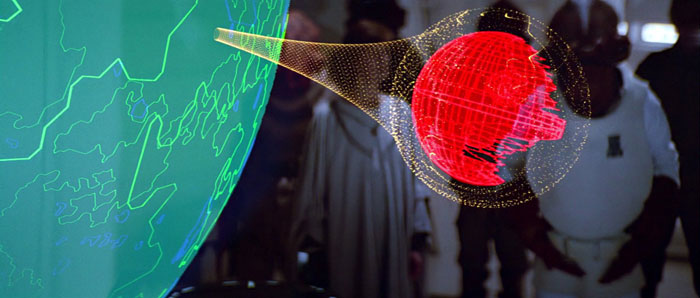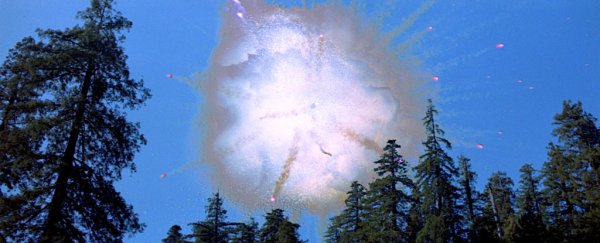Did you happen to notice that there are no Ewoks in Star Wars: The Force Awakens? While film industry banter suggests the movie makers cut out the furry little aliens (alongside Jar Jar Binks) in an effort to ditch some of the more childish elements of The Force Awakens' prequels, there's another possible explanation for why there aren't any Ewoks in the blockbuster: "The Ewoks are dead. All of them."
Those bleak words are the opener for a white paper written by planetary scientist David Minton from Purdue University, who says the destruction of the Empire's (second) Death Star in Return of the Jedi would have wreaked fiery, cataclysmic death upon Endor's cuddly inhabitants below.
Minton's calculations, published by Tech Insider, detail how the explosion of such a large mass in such close proximity to the forest moon would see the fragmented Death Star remains hurtle directly downwards onto the furry rebels, annihilating them and leaving behind a 700-km-diameter crater.
"The aftermath of this impact would be to obliterate everything on the surface. No Ewok could withstand an impact of that magnitude," Minton writes. "It is likely that the atmosphere would be so heated up by the re-entry of the ejecta thrown out by the excavation of this monstrous crater that every body of water on the entire world would be flash heated to steam, and every forest would ignite into a global firestorm."
 Return of the Jedi/Lucasfilm
Return of the Jedi/Lucasfilm
But why would the Death Star shrapnel land on Endor, and not just vaporise or float away in space? The answer, according to Minton, is to do with the size and mass of the Death Star, plus the nature of the explosion that destroys it.
Basing his calculations on the holographic representation of Endor and the Death Star in the film's briefing scene (pictured here), along with supplemental Star Wars data from Wookiepedia, Minton puts Endor's diameter at 4,900 km, the Death Star's at 343 km, and the altitude of the latter at 460 km above the forest moon.
At such close range, things are looking a little dicey for the Ewoks, given they and the Rebel Alliance willingly conspire to explode this gigantic metal structure floating above their heads. Minton hypothesises the Death Star is actually below stationary orbit distance, with the satellite being artificially held in place by some kind of gravity field.
Assuming that the "remarkably gentle" explosion depicted in the film's finale doesn't end up vapourising the satellite, Minton suggests "more or less what happens after the destruction is that the entire mass of the Death Star simply falls onto the location of the shield generator".
While it might sound unbelievable, this approximate version of events – called the "Endor Holocaust" – is actually a Star Wars fan theory that dates back to 1997.
Dave Mosher at Tech Insider actually asked a number of physicists if such a likelihood were plausible, and the prognosis for Ewok and Endor was almost resoundingly negative.
While they differ on the details, nearly all the scientists asked for their take on the Endor Holocaust scenario concur that the destruction of the Death Star in such close proximity to the forest moon would result in death for the Ewoks (and most likely any rebels on the planet), either by impact, fire, or radioactivity.
There could, however, be one upside to the destruction of the Ewok way of life. Planetary scientist Sarah Stewart from the University of California, Davis told Tech Insider the fiery cataclysm could result in a rebirth for the forest moon itself, sans furry alien teddy bears: "I think Endor survives… After some environmental cleanup [of the fallout], the forest moon would return to its idyllic state."
